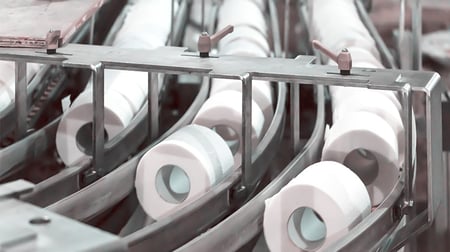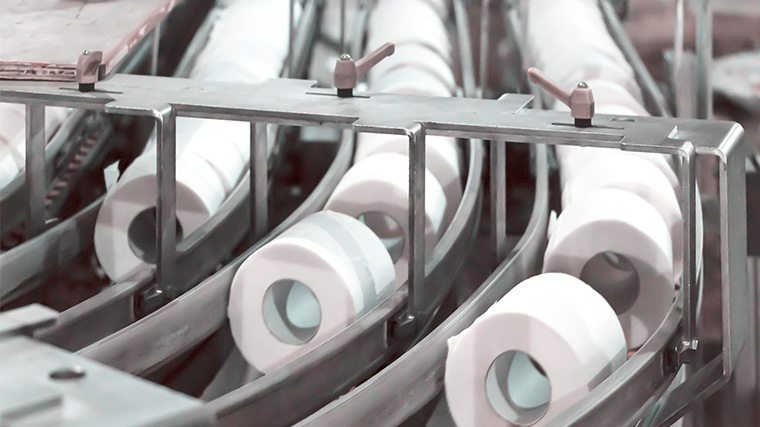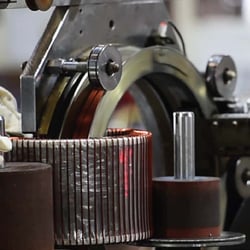If your manufacturing business has ever survived a crisis — supply chain disruption, market demand fluctuation, distribution problems, or perhaps even a natural or economic catastrophe — it had an uncommon opportunity to shine through the adversity. More importantly it gives you a chance to learn from the outcomes generated by the organization’s responses to the disaster. We don’t know any that are eager to flush it all away — not just the performance gains, but the opportunity to do even more with the unexpected wisdom.
What’s Next After Intense Circumstances?
To all the manufacturers that weathered the many difficulties in 2020 — CONGRATULATIONS! You rose to the challenge and adapted to unexpected demand spikes and shift in product mix. While operating in crisis mode, you assembled cross-functional teams and challenged your people to “get creative.” Working under immense time pressure, the team pulled together and made it work. You created ad-hoc processes and communication channels, and you achieved superior results.

Now that you figured out how to run equipment faster, will you dial back to the old standard speeds or will you find a way to sustain the higher output? Perhaps you minimized changeover downtime by emphasizing schedule sequencing. Will you go back to the old process, or should you invest in a production planning and scheduling tool to make sequencing quick and easy? Maybe you met new market demands by working closely with the sales and marketing team. Will you revert to relying on rudimentary demand signals, or will you leverage your new relationships and formalize the strengthened sales and operations planning process?
Operations executives that were once skeptical about “doing more” are now seeking us out to understand how they can institutionalize and sustain gains achieved during turbulent times. Meanwhile, many of our clients are rearranging their priorities to zero in on investments to ensure newfound gains don’t fade away.

Crisis Revealed: Standard Rates Artificially Low
One client told us that during a recent demand surge, the company discovered that a perfect storm of disconnected processes caused the maintenance team to set standard rates lower than necessary to achieve good quality and avoid breakdowns. During the period of heightened demand, the operations, maintenance, quality, scheduling, and sales teams put their heads together to figure out how to keep product rolling out the door without destroying people, equipment, or costs. As the situation eased, they agreed to do whatever necessary to keep the performance gains intact.
In this situation, we advised the company to investigate why people and processes had set standard rates lower than necessary. We encouraged them to be on the lookout for built-in buffers designed to compensate for things like:
- Short stops (two minutes or less) caused by tipped bottles, low fills, materials shortages, or packaging jams
- Unscheduled mechanical failure
- Slow ramp-up after changeovers
Once they discovered the “why” behind slower than necessary speeds, the team had sufficient insight to focus on the how — keep equipment running reliably, efficiently, and with record output:
Crisis Revealed: Changeover Downtime Not All the Same
Another client spoke with us recently about what they learned about downtime related to changeovers during a peak crisis period. They wanted to explore ways to institutionalize and speed up what they proved could be done using pencil and paper.
They found out that not all changeovers were equal, even though the company’s existing system treated them identically. As we worked through their new discoveries with them, we found that their existing processes and technologies lacked important capabilities:
- Break down changeover activities into component elements, including size change, minor cleanout, major cleanout, ramp up/down, setup, wait time, and so on. Since each element has a unique impact on time, and every changeover has a different combination of elements, this capability makes it possible to schedule changeovers with greater precision.
- Examine the impact of changeover from one job to the next, and sequence jobs to minimize changeover. For example, sequencing from light to dark, non-allergen to allergen, or Kosher to non-Kosher can optimize jobs to minimize changeover time.
- Leverage the complex changeover knowledge they already have, quickly and efficiently. The team’s experience revealed that rudimentary production scheduling tools like Excel, magnet boards, and native ERP applications are typically incapable of generating a truly optimized production schedule. Better still, they now have real-world justification for a production planning and scheduling system that can quickly optimize the production schedule.
- Look to people who know changeover optimization best: machine operators. Some leaders might be concerned that operators grasp all the nuances of every changeover element and how they interact. However, these highly skilled and knowledgeable workers have performed the changeover tasks many times and are probably continually improving the process. Unfortunately, there’s usually no feedback mechanism to publicize improvements.
Crisis Revealed: Opportunity for Collaborative S&OP
One manufacturer told us how operations was flung together with sales and marketing during the recent chaos, and all were forced to adapt to new circumstances. Operations management had to come clean about its dirty laundry and share its production realities. In return it received deeper insights about the demand picture. The new “all cards on the table” collaboration resulted in superior performance in the face of great adversity. More importantly, it laid the groundwork for a long-lasting partnership and a sales and operations planning (S&OP) process. The company discovered that long-term success with S&OP will require:
- People from different disciplines, backgrounds, and perspective to establish communication and trust and avoid difficulties caused by teams with different jargon, units of measure, and KPIs;
- Transparency in sharing an accurate picture of strengths and weaknesses so other S&OP team members can help overcome shortcomings;
- A team mentality, since helping the team win might sometimes mean that the benefit is for the team but not the individual (as when a sales rep secures a reliable forecast from a key customer but may not directly receive a higher commission, but operations achieves higher efficiency and lower safety stock); and
- Putting in the hard work long-term, and perhaps revisiting KPIs and reward systems to encourage ongoing active participation.
Don’t Let Gains Get Away
Just like in life, every manufacturing enterprise can choose to learn something new from experiences during difficult times. What will you do with your new capacity, efficiency, and knowledge? Is your company willing to go back to the way things were and risk a competitor overtaking your market share? Or, will you take steps to institutionalize your newfound capabilities and remain competitive or perhaps even overtake the competition?









